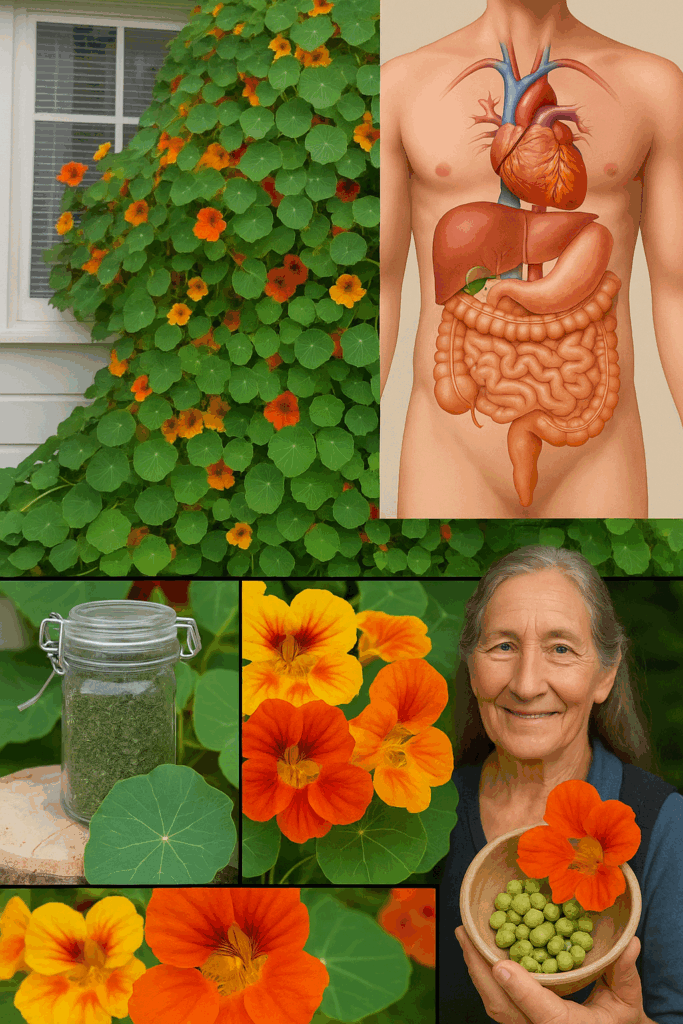🌼 Nasturtiums are vibrant, versatile plants that bring both beauty and practical benefits to your garden. Their bright orange, yellow, and red flowers brighten any space, but beyond looks, nasturtiums serve as natural pest controllers, pollinator magnets, and edible delights—making them indispensable in gardens big or small.

Why Grow Nasturtiums?
1. Natural Pest Control
Nasturtiums act as “trap crops,” attracting pests such as aphids, caterpillars, and whiteflies away from sensitive vegetables like tomatoes, cucumbers, and peppers. This natural defense reduces the need for chemical pesticides.
2. Attract Pollinators
Their colorful blooms attract bees, butterflies, and beneficial insects, enhancing pollination and boosting yields for fruits and vegetables like squash, zucchini, and berries.
3. Easy to Grow
Thriving in poor soils and requiring minimal care, nasturtiums tolerate drought and flourish in containers or hanging baskets, making them perfect for beginner gardeners.
4. Edible and Delicious
Every part—flowers, leaves, and seeds—is edible. The peppery flavor of flowers and leaves adds zest to salads and dishes, while pickled seeds substitute for capers.
How to Use Every Part of Nasturtiums
Flowers:
Mildly peppery, great for salads, garnishes, or stuffed with soft cheeses for appetizers.
Leaves:
Spicy and flavorful, perfect fresh in salads, sandwiches, or blended into pesto and omelets.
Seeds:
Tangy like capers; pickle them or grind dried seeds as a peppery spice for dressings and marinades.
Growing and Caring for Nasturtiums
- Planting: Sow seeds after last frost or start indoors early.
- Soil: Prefers poor, well-draining soil to encourage blooms over foliage.
- Sunlight: Full sun is ideal but can tolerate some shade.
- Watering: Drought-tolerant; water sparingly to avoid root rot.
- Maintenance: Light pruning encourages bushier growth and more flowers.
- Pests: Generally pest-resistant; use water spray to dislodge aphids if needed.

Health Benefits
- Rich in vitamin C for immune support.
- Antioxidants protect against cell damage.
- Natural antibacterial and antifungal properties.
- Contains iron, calcium, and other minerals for wellness.
Creative Uses Beyond the Garden
- Natural dyes from flowers add gentle color to fabrics.
- Floral arrangements brighten indoor spaces.
- Herbal infusions and homemade vinegars add unique flavors.
Nasturtiums are more than just a pretty flower—they are a practical, edible, and health-supporting garden powerhouse. Whether you’re seeking to repel pests, attract pollinators, or add flavorful, nutritious greens to your meals, nasturtiums deliver effortlessly.
Add nasturtiums to your garden and kitchen, and enjoy their vibrant colors, unique flavors, and abundant benefits all season long.
Inspired? Share this article with your friends and help spread the magic of nasturtiums!

